Show report: EUDI Milan
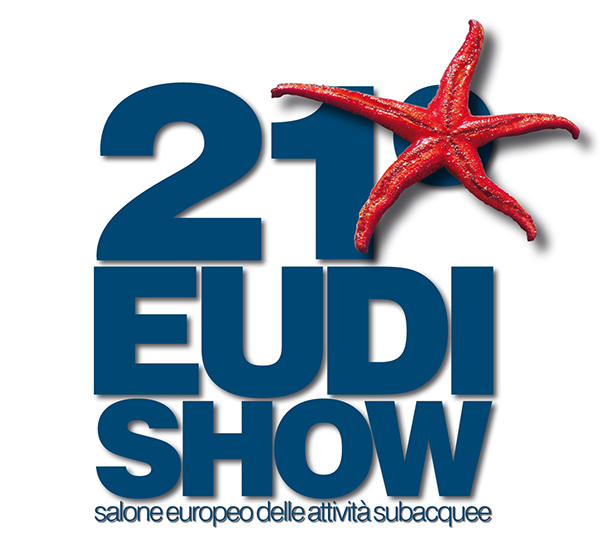
It was quite a weekend for dive shows, with Our World Underwater in Chicago, the Golden Dolphin in Moscow and EUDI in Milan. Italy’s EUDI Show (European Diving Show) was actually the biggest scuba show that I have attended outside of DEMA, despite the talk on the ground of being smaller than people remember.
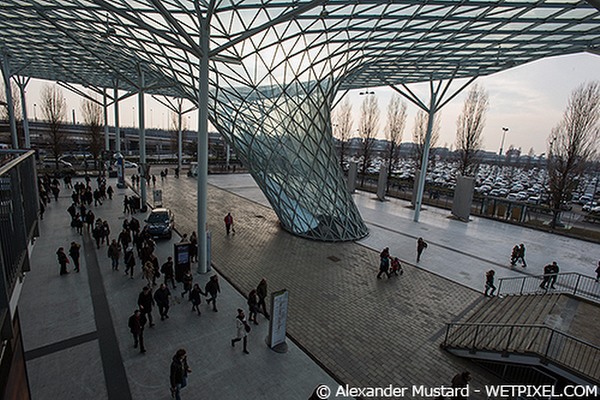
Compared to a British dive show (my reference in Europe) the EUDI show was more focused on equipment and training than travel. A talking point, this year, was the lack of the large glossy stands of the big Italian manufacturers like Mares and Cressi, but when I arrived on Saturday morning the show was super-busy. It was actually hard to move around, although it was quieter in the afternoon.

But I must preface this write-up with an apology. I made only a flying visit to Milan and spent most of my day chatting with friends (old and new) from the world of underwater photography (and much of this gossip I can’t repeat here!). So I am sorry to this isn’t the standard of thorough show report you get from Adam, Abi et al. It is more of a flavour of my single day at the show and the underwater stills equipment that caught my eye as I raced around. Also my Italian remains a work in progress, so I apologise if there is any misinformation in my report, it comes from my mistranslation of conversations on my part.
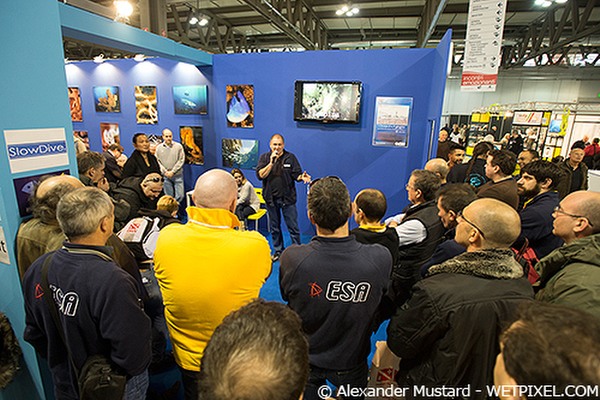
Underwater photography has always been very popular in Italy. Eleonora’s godfather has an Italian book on scuba diving from the 1960s and the quality of images in there are staggering (far better than Cousteau’s from the same era). And you only need to see the results from recent major competitions (like the Wetpixel/DPG/OWU and Beneath The Sea) to be aware that the tradition continues. Italy is home to a lot of very talented underwater photographers.
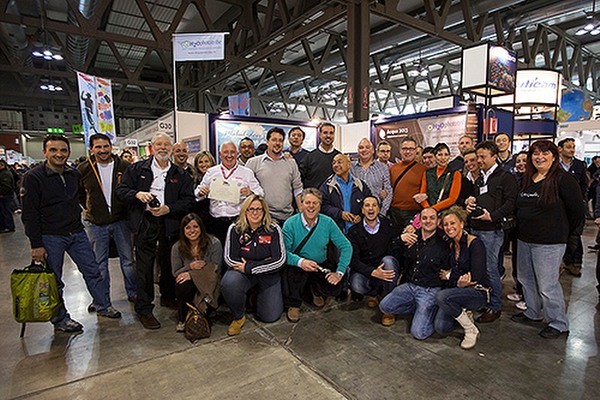
Underwater photography at the show was well represented, including some major manufacturers (both Nauticam’s Edward Lai and Seacam’s Harald Hordosch were attending), leading Italian underwater photography retailers (representing most of the other international brands) and, as you might expect, Italian housing brands. While Italian dive gear is used around the world (I am sure many of you have Mares fins, a Cressi mask etc) Italian underwater camera gear is less well-known outside the Mediterranean countries. I really like the original design flourishes on the fully featured Isotta housings from Isotechnic and I also looked at the electronically controlled Leo housings from Easydive, which are a boon for anyone who frequently upgrades their camera.
There were two main presentation stages in the hall and talks were well attended. The winning underwater images from the recent OASIS Competition were on display as large prints and new contests, such as the H2O Phototribe’s International Contest Acqua 2013 (closing date 10th March) had a launch party (yes, Italian food and wine is a big improvement on most dive show’s food). Finally, I would also like to say a big thank you for the very warm welcome I was given by everyone.
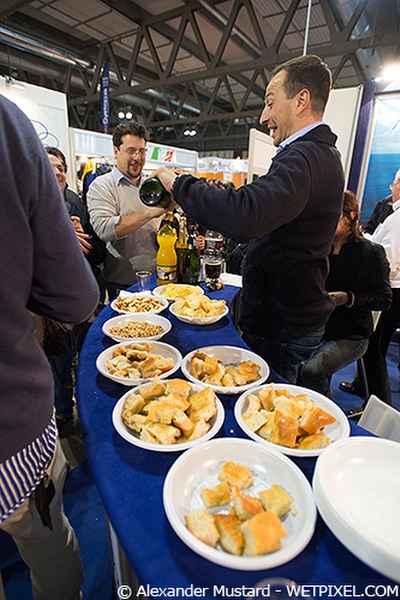
Stand visits.
As I said above, this is a pretty informal round-up of the show – a flavor from Italy. I didn’t have time photograph all the imaging products on show, so the coverage is biased towards my interests. As such I have not divided this into individual stands as that would imply I was more organized than I was.
Nauticam Italy had an attractive stand that seemed to be a gathering point for underwater photographers through the day. I was impressed to see Nauticam’s Edward and Jacqueline Lai had travelled from Hong Kong to support Pietro Cremone. And, of course, they had lots and lots of gear on display.
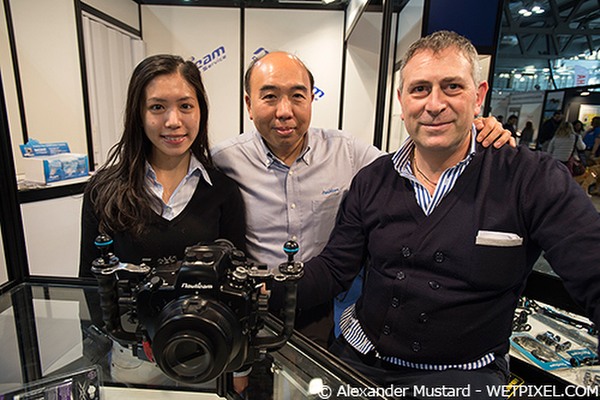
There were many housings on display from SLRs to mirror-less and compacts. Plus a range of other products that Pietro sells, including the Retra Snoots I had recently reviewed. I even got to meet the man behind it, Oskar Music.
My attention on the stand was absorbed by the new NA-D600, the first Nikon D600 housing I have seen, which Keri Wilk recently reviewed on DPG, with the help of my friend Stinky the Dolphin.

The housing has all the expected Nauticam hallmarks, with the excellent shutter speed and aperture dials from the NA-D800 and also a new rocker control on the front to access the Fn and Pv buttons. A minor feature that I particularly liked was a lockable lever for the drive mode dial, which was something I had recently been complaining in my recent Subal review.
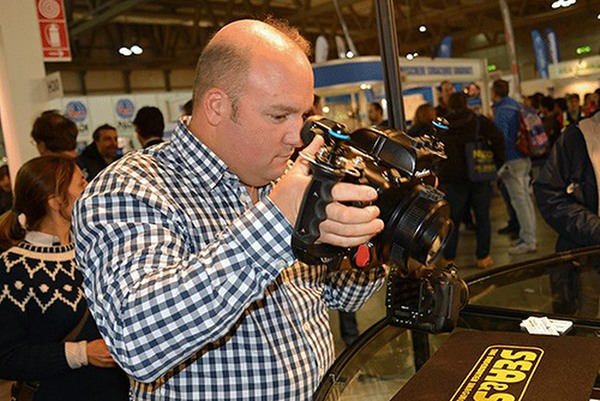

I need to coordinate with Adam, but I hope to take the Nikon D600 underwater soon, for a review.
Next we visited the stand of F.M. Foto and Video where Guido Lambertini and their dog Prince showed us various housing. F.M. Foto and Video are dealers for Subal, Hugyfot, Sealux, Igloo, Ikelite, Patima and Nimar. Nimar also had their own stand, but I didn’t manage to get to see them. I told you that I was a useless reporter.
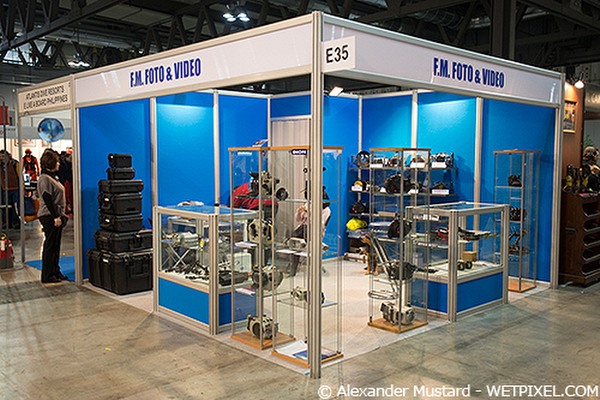
They had a good number of Hugyfot and Subal housings on show. A friend was keen to see the Subal ND800 housing, so we spent most of our time looking at that. It is a fully featured housing (including a rocker control for the Pv and Fn buttons below the aperture dial, although unlike the ND4 it doesn’t have a paddle for ISO, just a push button). The housing has a strong emphasis on ergonomics and a very solid build. The housing also has two spare blanked off sockets on the left side and space for connecting cables to the sockets and expanding functionality.
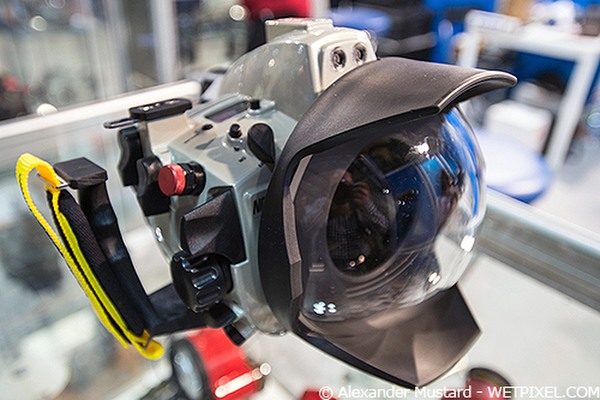

We also ran into the genial Pilo (David Pilosof) here, who was representing the popular and fun Eilat Red Sea shootout.
Nearby we stopped in at Fraco Sub who are the Italian distributors for Sea & Sea and dealers for Light & Motion. Pino Tessera got the Sea & Sea D800 housing out of the back room for us to look at. My buddy Peter de Maagt had already brought this housing on my recent workshop in Raja Ampat (along with the clog fins), so I was already quite familiar with it. Although it is still closed with snappy latches, it is clear that Sea & Sea have been put considerable effort into improving the ergonomics of this housing.
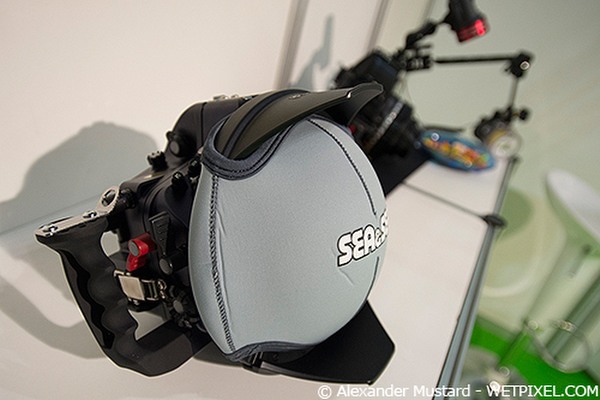
I was also impressed with angled push buttons for most of the controls on the back, bringing them much closer to the handles and spacing them out. However, the focus point (and menu navigation) buttons are still very tightly clustered, which could be troublesome in thick gloves. The primary controls of aperture, shutter speed and shutter are very nice (helped by the small size of the housing) and there are separate levers for recording and AF-ON.
Last April I wrote the Wetpixel review for the then new Nauticam NA-D4 housing, which was the first housing to introduce a lever, rather than button for changing the ISO. A feature I lavished praise on and I am very pleased to see it has become a must have and has widely adopted on most housings (now that changing ISO has become so free from penalties). Sea & Sea have a neat, small lever for this, which you push up to change ISO and down for image review.
I
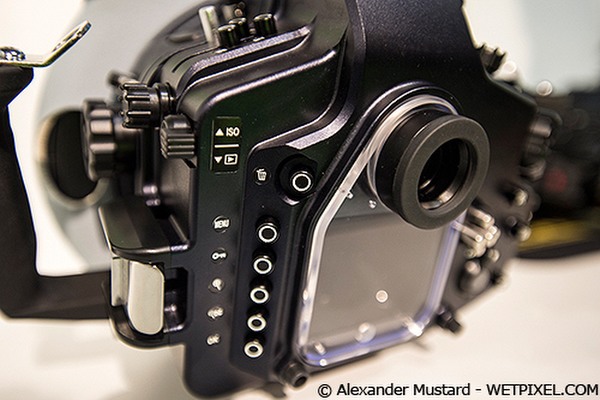
Next stop was Isotecnic the long-standing Italian manufacturer, who make just about everything you could need for underwater imaging: SLR stills housings, compact stills housings, video housings, domes, lighting, strobes, arms, clamps etc. They seemed to have most of it at the show too.
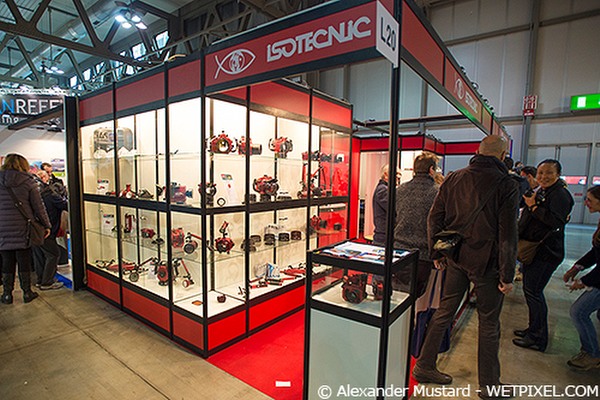
The stand was busy and I didn’t want to take up too much of Egidio Isotta’s time. We looked in detail at their D800 housing, which I posted photos of in the Wetpixel forums in October when I saw it in Sardinia.
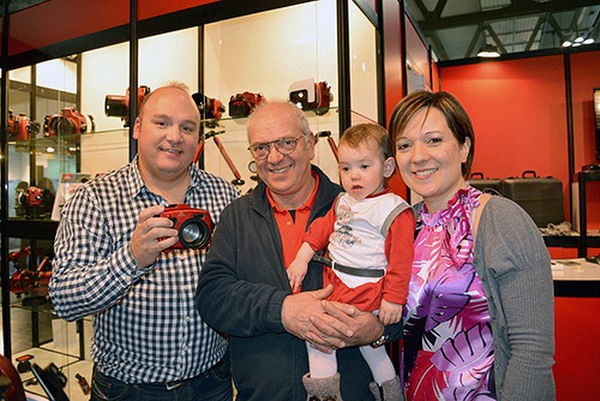
All Isotta SLR housings and ports are sealed with double o-rings and the housing has a neat single catch closing mechanism. They have both optical and electronic synch available and can take most of the major external viewfinder types. They are full featured and have a number of original design solutions.
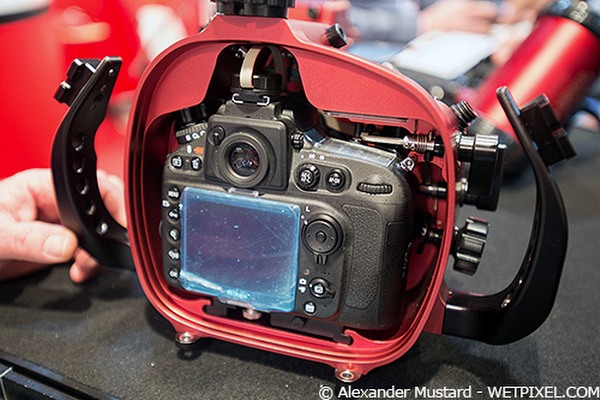
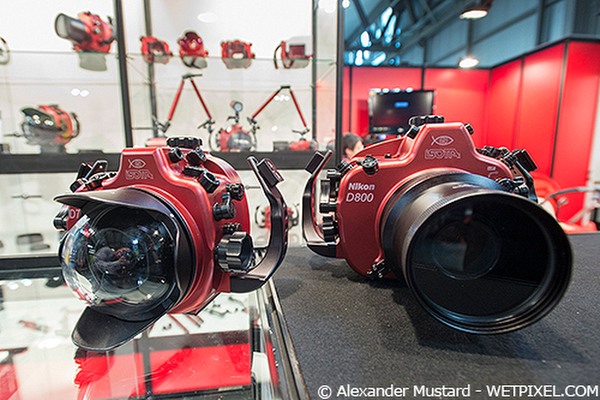
Isotecnic make a whole range of gear and lots of different housings. I really like their metal compact housings, which are small in size, look super strong and full featured. The Sony RX-100 housing (below) was small enough to fit into my hand, yet had features such as a leak alarm, a port that could accept 67mm lenses natively and even manual focus gears.
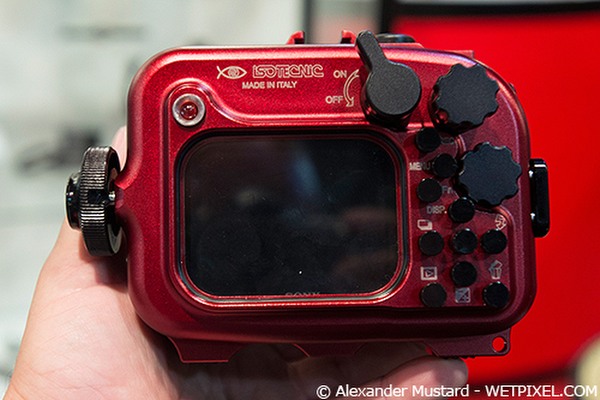
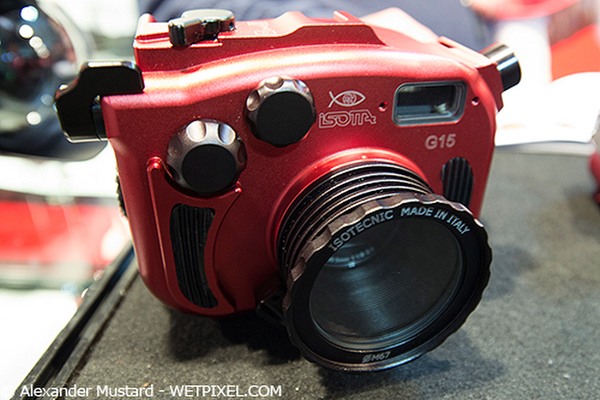
They also make strobes, the AV100 seems a nice, mid-sized unit. It offers TTL or manual control (with electronic synch) and has a nice aiming light, which switches off automatically for a couple of seconds when you shoot. The battery compartment is sealed from the rest of the strobe.
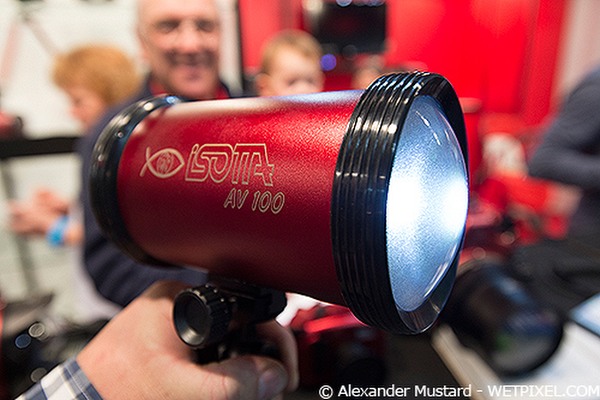
Before I forget, I should also thank my friend Miho Tsuruoka for not only taking some of the pictures of me at the show, but also for bringing this new +10 macro lens back from Japan for me to try. The lens has a concave from element, which Edward Lai (from Nauticam) suggested, when I showed him, might give it a slightly longer working distance than other diopters of the same strength. I am hoping to get it in the water this week. I am less grateful to her for the picture below!

Next stop was Seacam’s simple, but attractive stand, which I had tried to visit earlier in the day, but was filled with photographers. Part of the reason for this is that Harald Hordosch was attending and they were showing their range of beautifully produced housings and strobes. I was secretly hoping that they might have brought the beautiful 3D Seacam rig that they created for Italian photographer and filmmaker Roberto Rinaldi, but sadly not.

I was keen to have a proper hands on with the Seacam D800, because my friend Geert Nies has been telling me for ages that he thinks it is the finest underwater still housing ever made. And yes, while I know Geert is a Seacam dealer, he does not go in for BS. It is a beautiful housing and one that clearly is a result of very considered design. Its classic Seacam too, with controls moved to within easy reach of the handles and although features improvements throughout, any Seacam user would feel immediately familiar with it.
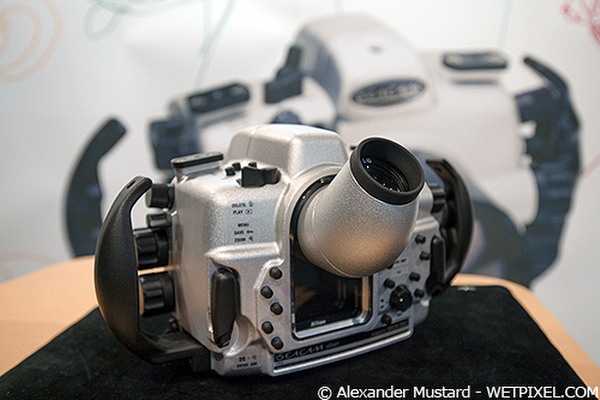
What is particularly memorable is that design features a number of double function controls, meaning the housing is not cluttered and has with less total levers and buttons (while still making all functions accessible) and the more of the most important functions are right under your fingertips. Examples are the image playback and delete buttons, which are activated by pushing the same lever in opposite directions and the shutter release, which when in video mode can be pushed forward to start and stop video recording.
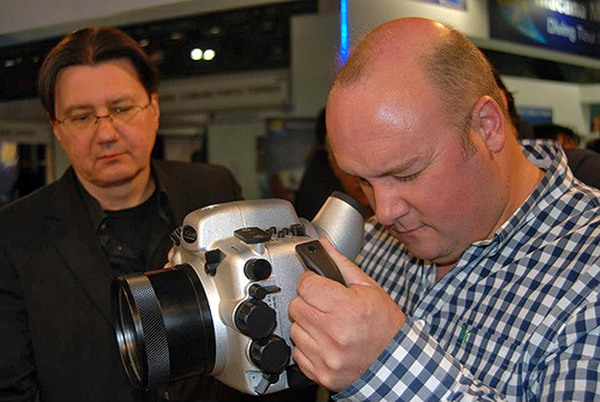
I also had a chance to see the new version of the Seacam S45 viewfinder. I am very familiar with the older version (as many friends have it) and was really impressed with the new one. It is the brightest viewfinder I have tried and it is also so much lighter than you expect, great for travel.
For my final stop I headed down to see Italian housing manufacturer Easydive. Their housings philosophy is based on electronic control and while they might not be the last word in ergonomics nor provide access to all camera controls, they have the big advantage that the housings can be easily upgraded to match your latest camera.
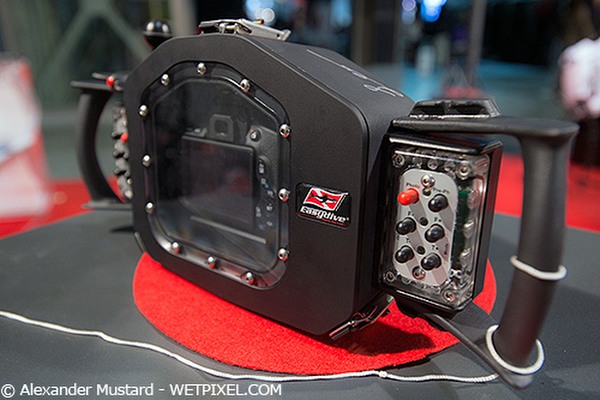
Not everything I’ve heard on the underwater photography grapevine about Easydive’s housing philosophy has been positive. However, I’ve never tried one myself, and so I was keen to quiz German photographer Rico Besserdich, who Easydive sponsor, to hear what he really thinks about them, after taking one to the Red Sea. Sadly the stand was empty when I went down there, so I didn’t learn much.
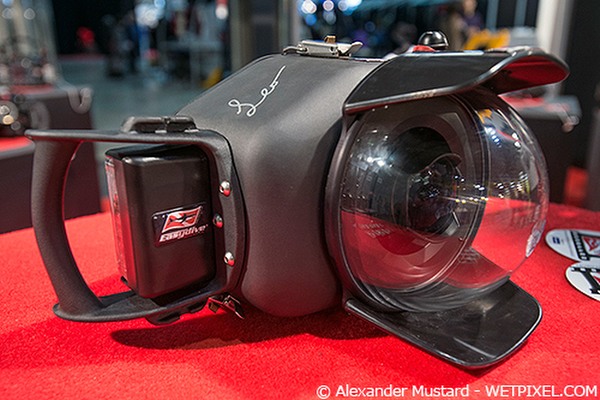
I find the Easydive housings quite fascinating for their very different design approach. I hope I get the chance to be talked through one soon. One area that I think these housings could be used for advantageously is as a pole cam. I suspect it would be quite easy to add longer cables so that all the electronic controls could be moved to the top of the pole.
A conversation for next time… as I said, this was a flying visit and sadly I did not get round everyone. But hopefully this gives you a flavor of the underwater photography side of the event.